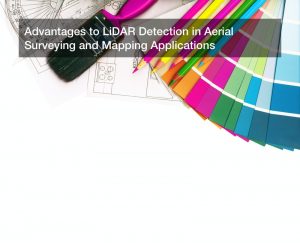
Over the recent past, lidar technology has become one of the hallmarks of the evo9lving technological worlds. It therefore comes as no surprise that engineers are implementing this technology in many applications in order to align their technological goals with an efficient system for aerial mapping. So what is lidar technology? Some of the industries that have increasingly implemented lidar technology are the construction and the automotive industries. What happens is that lidar detection systems are used in among other applications survey assessments, floodplain mapping, urban planning, coastal engineering, hydrology, landscape ecology, forest inventory, volumetric calculations and geomorphology. In terms of its application, lidar mapping companies in usa combine lidar surveying and photogrammetry with GIS to visualize, manage and disseminate data. So what is lidar technology best known for hence its popularity? Lidar is increasingly becoming a popular technological option as it allows for accurate and precise data collection. Of course with the many options to choose from, lidar too has its limitations hence the reason why everything comes down to its specific use. Since lidar technology typically allows you to see things from a bigger picture, there are reasons why an engineer would likely pick lidar over other mapping technologies. Apart from understanding what is lidar technology, below are some of the key advantages of using the technology.
Advantages of Using Lidar
One of the key benefits of using lidar is because the system is very accurate and precise. You often find that aerial lidar and digital imaging services involve data collection and imaging using laser sensors from an aircraft. This means that the data collected in instantaneous hence the high precision and accuracy. Apart from resulting data being very accurate, lidar can also cover a higher area density compared to traditional data collection methods. This technology is able to penetrate the ground easily and provide a detailed imaging of the data being surveyed. It is this aspect that allows for a higher area density to be covered and its application would be perfect for activities such as flood plan delineation. This is because such activities require a higher area density to be covered making other imaging technologies such as photogrammetry redundant. Another amazing benefit of using lidar is because this technology can be able to penetrate vegetation. When surveying areas with thick vegetation and canopies, using lidar technology will allow you to create accurate models of the surface data including things like elevation. This is a feature that competing technologies might not be able to achieve as they create two-dimensional models and are ineffective when it comes to data collection through dense forests or surfaces with thick vegetation.
Lidar Project Considerations
Apart from knowing what is lidar technology, you also need to understand the kind of applications that you should implement lidar on. Despite its many benefits, it is not guaranteed that lidar systems will work for your project. If you decide to use lidar data, think about what your project needs and whether you have adequate funding to use lidar technology companies for data collection. Some of the key questions you should ask yourself should include what the lidar data will be used for, the resources needed to undertake a lidar systems project, the appropriate level of data processing and the importance of the data layers provided from the project. In most cases, how much it will cost you for a lidar project will depend on things such as weather patterns, the scope, location, area density, time frame and ground surface conditions. What is important to understand in lidar projects is that having a high volume datasets can be good and bad. This is because, a large dataset can provide for more accurate results in data processing. However, having a large dataset will also require a substantial resource allocation for processing.
